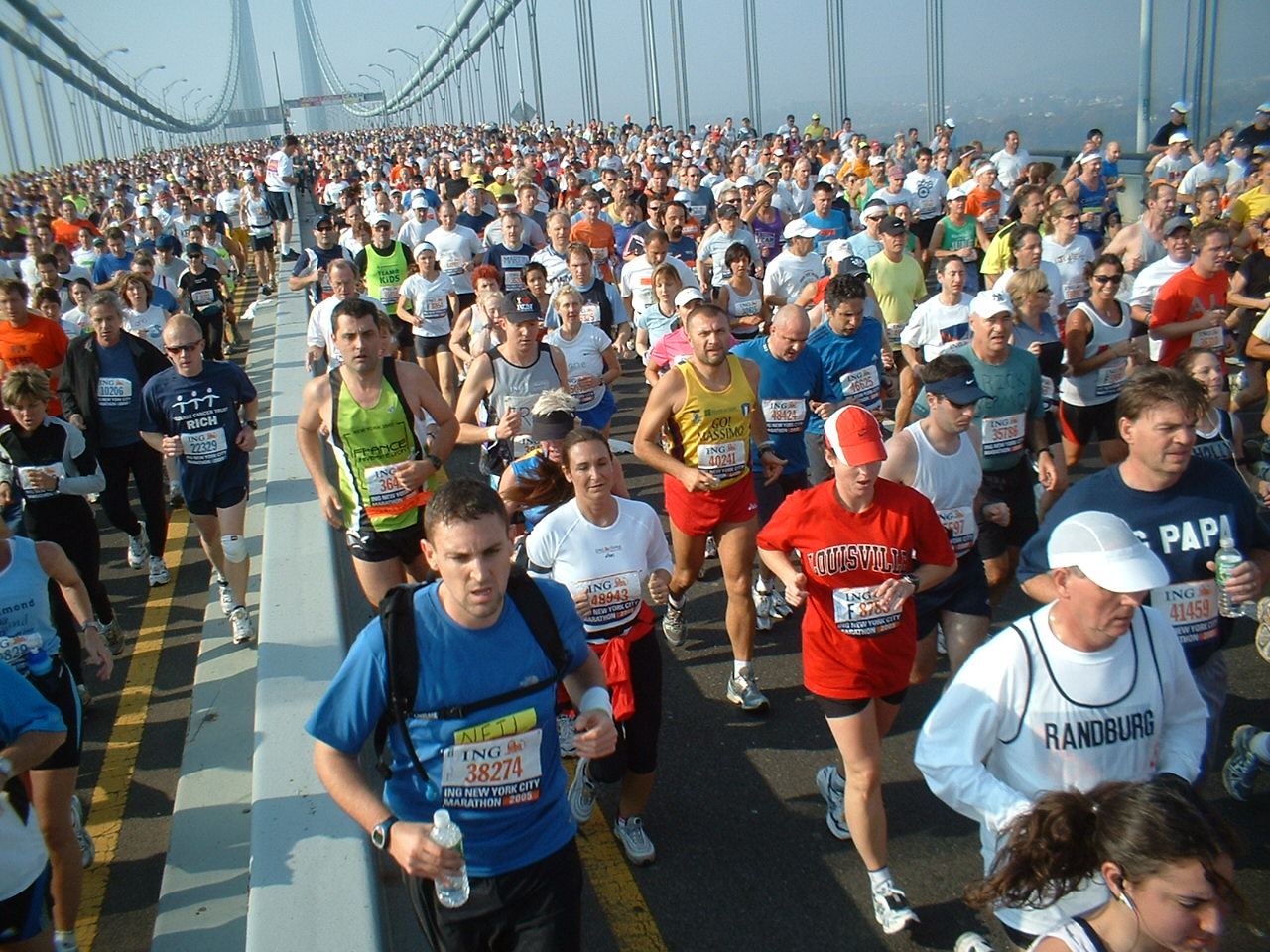Endurance athletes have long known that they perform best when they find their "zone." If you're a long distance runner or swimmer, for example, you may recognize the zone as when you no longer have to tell your legs and arms to keep a certain pace -- they do it automatically. Your body works as a perfect machine, taking in the right amount of oxygen and burning carbohydrate at a steady pace so that it becomes easier to keep going. (Within reason, of course.)
The zone is a wonderfully quiet mental place where you can just think about nothing, relax into the rhythm of movement, and enjoy what's going on around you. Think of it as physical meditation. Now a new mathematical formula by Benjamin Rapoport, published in PLoS Computational Biology, shows the speediest pace any endurance athlete can sustain for an entire race (though his particular focus is marathon running). Part of this is finding the top end of your zone so that you don't hit that infamous "wall."
Typically, endurance athletes do their best to avoid the wall, or period when the body has completely used its glycogen stores, by carbo-loading. In the 7 to 10 days leading up to a race, many athletes will focus on including high concentrations of complex carbohydrates into each meal. As a result, glycogen is built up in the muscles and made available to the body during the race. Many experienced marathoners, for example, also plan their race following a 10-10-10 strategy. The first 10 miles is run at a slower than average pace, which allows the body to conserve energy. The second 10 miles is run at race pace -- which is possible because there's still plenty of energy in the body. And the last 10 kilometers (6.2 miles) is run at or above race pace, using what's left of the glycogen stores and adrenaline from crowds to get to the finish line.
But Rapoport's research suggests that there is more to avoiding that wall than this: his "study demonstrates that the energetic constraints on endurance runners are more subtle, and depend on several physiologic variables including the muscle mass distribution, liver and muscle glycogen densities, and running speed (exercise intensity as a fraction of aerobic capacity) of individual runners."
Speed is the most controllable factor in this formula for athletes. According to Rapoport, "a 10-second difference in pace per mile could make the difference between success and a dramatic failure." Finding your critical pace is in part due to your VO2 max -- a measure of aerobic efficiency. By finding your VO2 max and keeping to it, you can maximize efficiency in burning energy stores and get your body across whatever finish line you're shooting for.
Rapoport plans on making an easy to understand version of this formula online in the near future so that athletes of all levels and abilities can work toward setting new Personal Bests. “My primary goal is to give any marathon runner a qualitative plan for their training,” he says.
Go On Till You Come to the End; Then Stop
8 years ago









